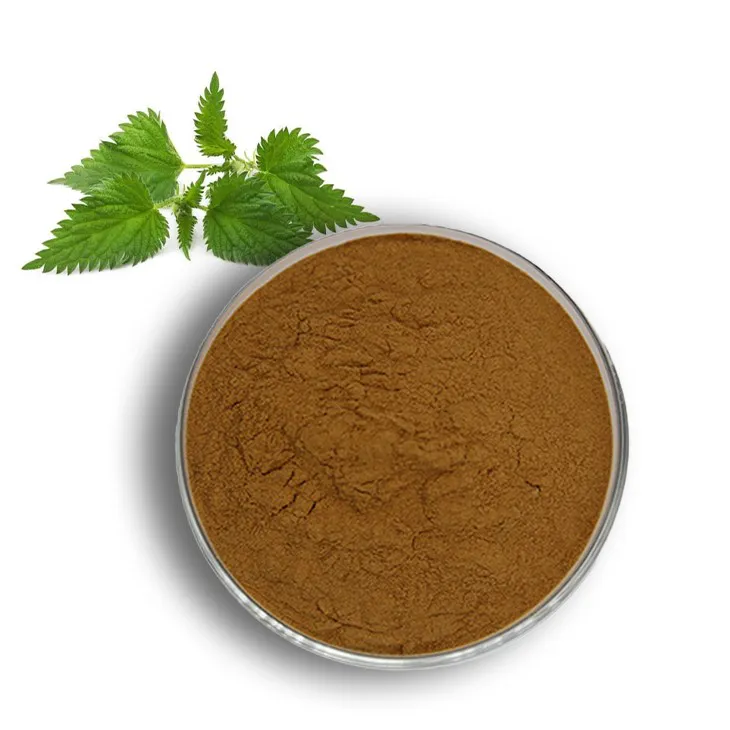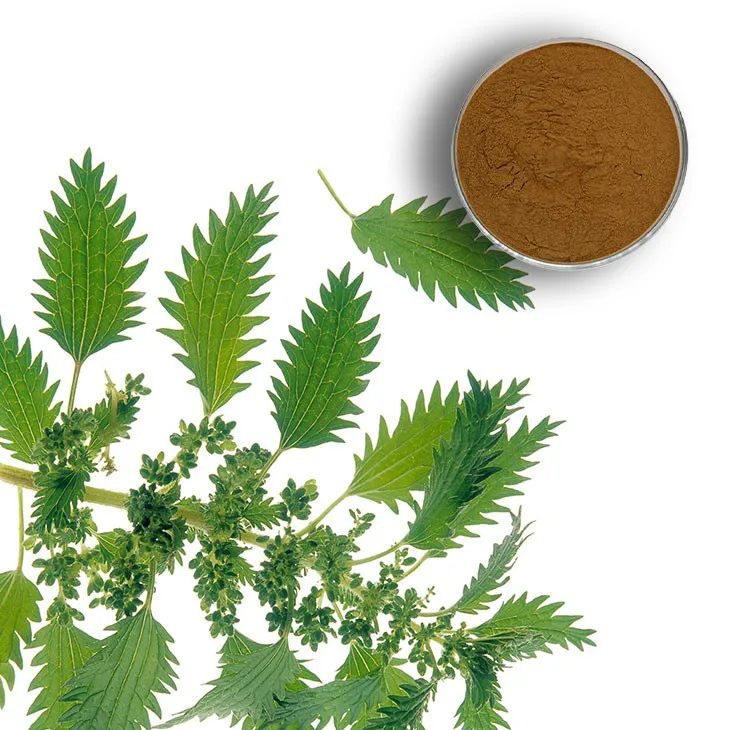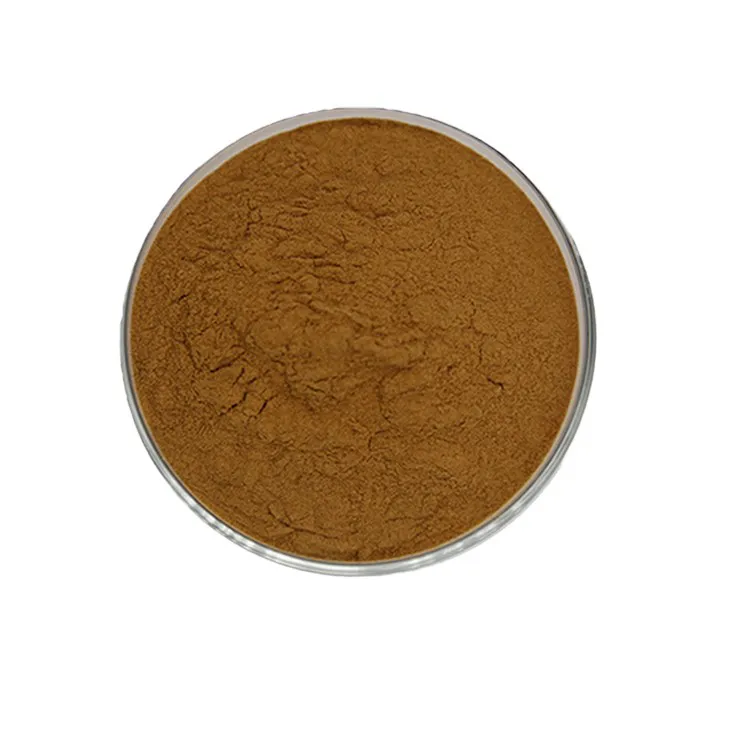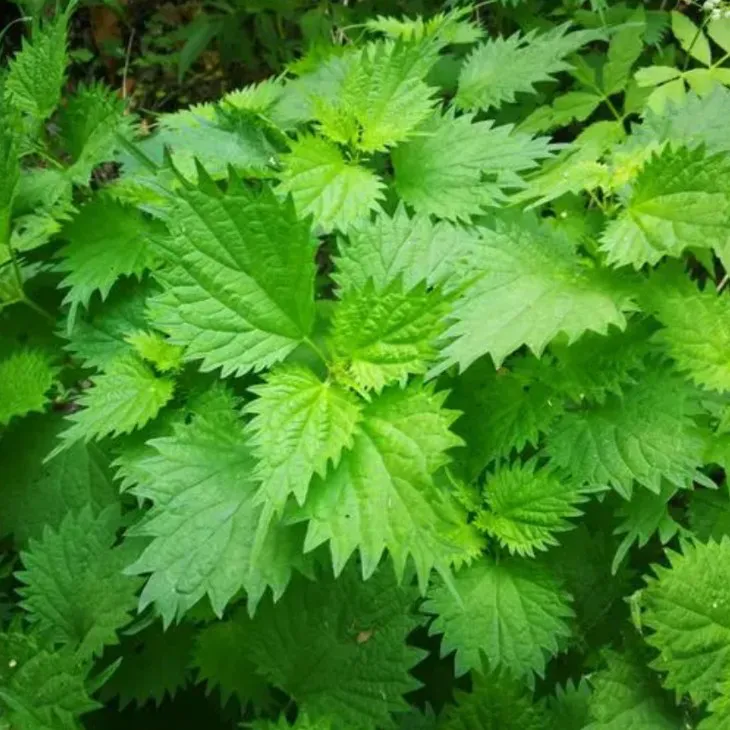- 0086-571-85302990
- sales@greenskybio.com
How to make powder from nettle root extract?
2024-11-26

1. Introduction
Nettle Root Extract has been recognized for its various potential health benefits, and converting it into a powder form can offer convenience in terms of storage, dosage, and use in different applications such as dietary supplements and herbal remedies. However, the process of making powder from Nettle Root Extract requires careful attention to several aspects, from the initial selection of raw materials to the final drying and powdering steps. This article aims to provide a comprehensive guide on this process.

2. Raw Material Selection
2.1. Source of Nettle Roots
The first step in making high - quality Nettle Root Extract powder is to select the right nettle roots. Nettle plants can be found in different regions, but it is crucial to choose those that are free from contaminants such as pesticides, heavy metals, and other pollutants. Organic nettle roots are often a preferred choice as they are grown without the use of synthetic chemicals. For example, nettle roots sourced from wild - crafted, well - managed natural areas or from certified organic farms are likely to be of better quality.
2.2. Harvesting TimeThe time of harvesting also plays an important role. Nettle roots are typically best harvested in the fall or early spring. During these times, the plants have stored a significant amount of nutrients in their roots. Harvesting at the wrong time may result in lower nutrient content in the roots, which will ultimately affect the quality of the extract and the powder. For instance, if harvested too early in the growing season, the roots may not have fully developed and may lack certain active compounds.

3. Extraction Process
3.1. Cleaning the Nettle Roots
Once the nettle roots are harvested, they need to be thoroughly cleaned. Remove any dirt, debris, or other foreign materials. This can be done by gently washing the roots under running water. It is important to be careful during this process as nettle roots are relatively fragile and excessive force can damage them.
3.2. Drying the Nettle RootsAfter cleaning, the nettle roots should be dried. Drying can be achieved through natural methods such as air - drying in a well - ventilated area or through the use of a dehydrator. The roots should be dried until they are brittle. This usually takes several days to a week depending on the drying method and environmental conditions. Proper drying is essential as it helps to prevent the growth of mold and bacteria during the extraction process.
3.3. Grinding the Dried Nettle RootsOnce the nettle roots are completely dried, they can be ground into a coarse powder. This can be done using a mortar and pestle for small - scale production or a grinder for larger quantities. The goal at this stage is to break the roots down into smaller particles to increase the surface area for extraction.
3.4. Extraction Solvents
There are different solvents that can be used for extracting the active compounds from the ground nettle roots. Commonly used solvents include ethanol, water, or a combination of both. Ethanol is often preferred as it can dissolve a wide range of compounds, including some of the important bioactive components in nettle roots. However, when using ethanol, it is necessary to ensure proper safety measures as it is flammable.
The ratio of the solvent to the ground nettle root powder also matters. A general guideline is to use a solvent - to - powder ratio of around 5:1 or 10:1, depending on the desired concentration of the extract. For example, if you have 100 grams of ground nettle root powder, you may use 500 - 1000 milliliters of solvent.
3.5. Maceration or Soxhlet Extraction
Maceration is a simple extraction method where the ground nettle root powder is soaked in the solvent for a period of time, usually several days to weeks. The mixture should be stirred occasionally to ensure good contact between the solvent and the powder. Soxhlet extraction, on the other hand, is a more continuous extraction method that uses a specialized apparatus. It is often more efficient in extracting a higher percentage of the active compounds but requires more complex equipment.
During the extraction process, it is important to maintain the appropriate temperature. For ethanol - based extractions, a temperature range of around 20 - 50°C is often suitable. Higher temperatures may cause the solvent to evaporate too quickly or may degrade some of the active compounds.

4. Purification of the Extract
4.1. Filtration
After the extraction is complete, the next step is to separate the extract from the solid residue. Filtration is a common method used for this purpose. A simple filter paper in a funnel can be used for small - scale extractions, while for larger - scale operations, a filter press or vacuum filtration system may be more appropriate. Filtration helps to remove any undissolved particles, plant debris, or other impurities from the extract.
4.2. Evaporation of the SolventOnce the extract is filtered, the solvent needs to be removed to obtain a concentrated extract. This can be done through evaporation. The extract can be placed in a shallow dish or evaporating flask and heated gently. However, it is important to avoid over - heating as this may damage the active compounds. A rotary evaporator can be used for more efficient and controlled evaporation, especially for larger volumes of extract.

5. Conversion to Powder
5.1. Freeze - Drying
One of the best methods to convert the concentrated nettle root extract into powder is through freeze - drying. Freeze - drying involves freezing the extract and then removing the water (or solvent if water - based extraction was not used) through sublimation. This method helps to preserve the structure and activity of the active compounds in the extract. The resulting powder is often of high quality with good solubility.
5.2. Spray - DryingSpray - drying is another option. In this method, the concentrated extract is sprayed into a hot chamber where the solvent evaporates quickly, leaving behind a fine powder. However, spray - drying may require more specialized equipment and careful control of the drying parameters such as inlet and outlet temperatures, feed rate, and atomization pressure to ensure the quality of the powder.
5.3. Tray - Drying and GrindingIf freeze - drying or spray - drying equipment is not available, the concentrated extract can be dried in a tray in a low - humidity environment. Once the extract is completely dried and forms a solid mass, it can be ground into a powder using a mortar and pestle or a grinder. However, this method may result in a powder with lower quality compared to freeze - drying or spray - drying, as there is a higher risk of heat - induced degradation of the active compounds during the drying process.
6. Quality Control and Storage
6.1. Quality Control
Quality control is essential to ensure the safety and effectiveness of the nettle root extract powder. Tests can be carried out to determine the purity of the powder, including analysis for the presence of contaminants such as heavy metals, pesticides, and microbial contaminants. Spectroscopic techniques such as infrared spectroscopy or high - performance liquid chromatography (HPLC) can be used to analyze the composition of the powder and confirm the presence of the expected active compounds.
The particle size of the powder can also affect its properties. A consistent particle size distribution can be achieved through proper grinding and sieving techniques. Sieving the powder through different mesh sizes can help to remove any large particles or aggregates and ensure a more uniform product.
6.2. StorageProper storage is crucial to maintain the quality of the nettle root extract powder. The powder should be stored in a cool, dry, and dark place. Exposure to heat, moisture, and light can cause degradation of the active compounds over time. Using airtight containers such as amber - colored glass bottles or high - quality plastic containers can help to protect the powder from environmental factors. Additionally, adding a desiccant to the storage container can further prevent moisture absorption.
7. Conclusion
Making powder from nettle root extract is a multi - step process that requires attention to detail at each stage. From the careful selection of raw materials to the final quality control and storage, every aspect contributes to the production of a high - quality product. By following the proper procedures for extraction, purification, and powder conversion, it is possible to create nettle root extract powder that can be used in various applications, whether in the field of natural health products or in traditional herbal medicine.
FAQ:
Q1: What are the key steps in making powder from nettle root extract?
The key steps include proper selection of nettle roots as raw materials. After extraction, purification processes are crucial to remove impurities. Then, the extract needs to be dried carefully under appropriate conditions, such as low - temperature drying to preserve its active components. Finally, it can be ground into a fine powder.
Q2: How do you select the right nettle roots for extraction?
Look for nettle roots that are healthy, free from diseases and pests. They should be harvested at the appropriate time, usually when the plant has reached a certain maturity level. Also, consider the source of the nettle roots, preferably from areas without excessive pollution.
Q3: What purification methods are commonly used during nettle root extract preparation?
Filtration is a common method, which can remove large particles and debris. Centrifugation can also be used to separate different components based on density. Chromatography techniques may be employed for more precise purification to isolate specific active compounds.
Q4: Why is proper handling important during the process of making nettle root extract powder?
Proper handling ensures the quality and effectiveness of the final powder. Incorrect handling, such as exposure to high temperatures or contaminants during extraction or drying, can degrade the active components in the nettle root extract, reducing its potential benefits.
Q5: What are the ideal drying conditions for nettle root extract before making it into powder?
Low - temperature and low - humidity conditions are ideal. For example, using a vacuum - drying method can help remove moisture while minimizing damage to the active compounds. This helps to maintain the integrity of the nettle root extract before it is ground into powder.
Related literature
- Nettle Root Extract: Properties and Applications"
- "The Science behind Nettle Root Extraction and Powder Formation"
- "Advanced Techniques in Nettle Root Extract Powder Production"
- ▶ Hesperidin
- ▶ citrus bioflavonoids
- ▶ plant extract
- ▶ lycopene
- ▶ Diosmin
- ▶ Grape seed extract
- ▶ Sea buckthorn Juice Powder
- ▶ Beetroot powder
- ▶ Hops Extract
- ▶ Artichoke Extract
- ▶ Reishi mushroom extract
- ▶ Astaxanthin
- ▶ Green Tea Extract
- ▶ Curcumin Extract
- ▶ Horse Chestnut Extract
- ▶ Other Problems
- ▶ Boswellia Serrata Extract
- ▶ Resveratrol Extract
- ▶ Marigold Extract
- ▶ Grape Leaf Extract
- ▶ blog3
- ▶ blog4
-
Chinese Withania somnifera Extract Factory.
2024-11-26
-
中国松树皮提取物粉粉末供应商
2024-11-26
-
High - quality Marigold Extract Products.
2024-11-26
-
100% Pure Natural Mango - Flavored Powder.
2024-11-26
-
Carrageenan Extract Powder
2024-11-26
-
Curcuma Longa Extract/Turmeric extract
2024-11-26
-
Konjac Powder
2024-11-26
-
Diosmin
2024-11-26
-
Europen Bilberry Extract
2024-11-26
-
Sugarcane Extract
2024-11-26
-
Acai Berry Extract
2024-11-26
-
Soy Extract
2024-11-26
-
Moringa powder
2024-11-26
-
Bilberry Extract
2024-11-26





















